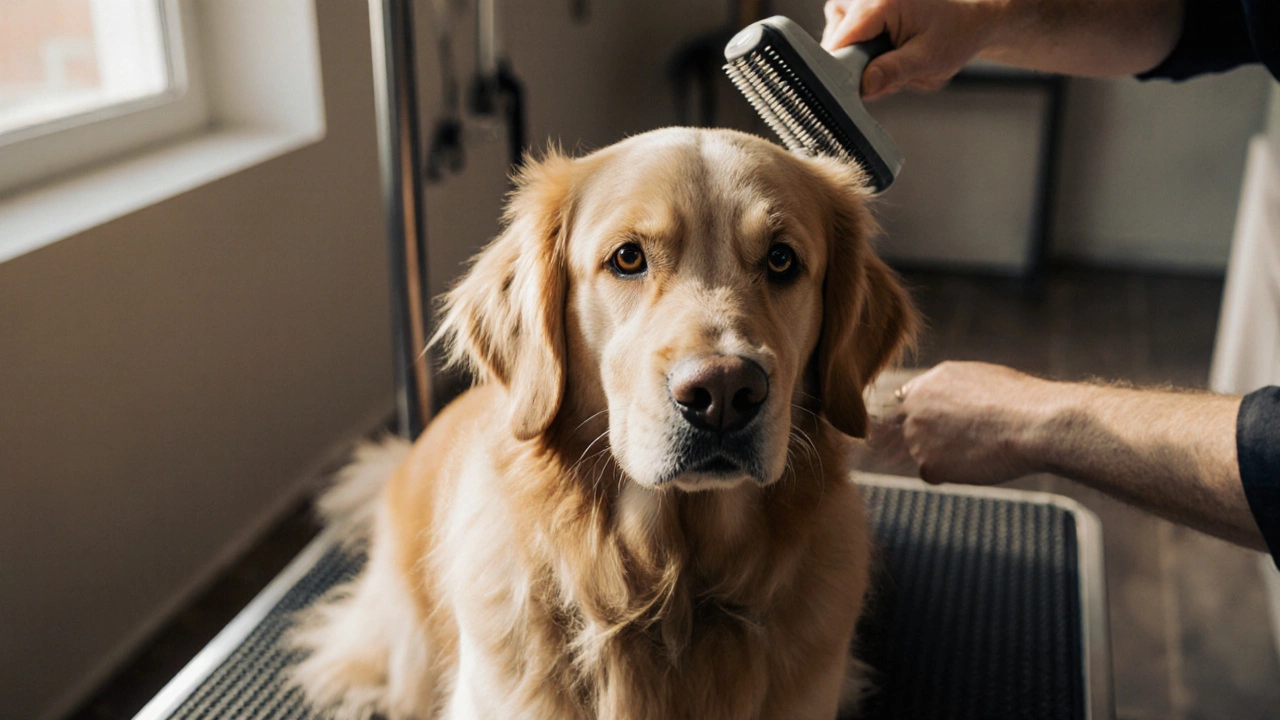Pet Grooming Stress: How to Keep Your Dog Calm During Grooming
When dealing with Pet Grooming Stress, the anxiety and tension a dog shows during bathing, clipping, or brushing sessions. Also known as grooming anxiety, it often stems from fear of loud noises, strange sensations, or loss of control. Dog Anxiety, a common emotional response to unfamiliar sounds, smells, or handling is the core driver, so understanding that link is the first step toward relief.
One surprising factor is Pet Travel Stress, the nervousness dogs feel when moving in cars, planes, or other transport. A puppy that just rode in a carrier to the groomer may still be processing that trip, which raises its stress level during a bath. The more recent the travel, the higher the chance the animal will associate the grooming area with a recent, unfamiliar journey, compounding the anxiety.
Tech‑savvy owners often try Vibrating Dog Collars, devices that emit gentle vibrations to redirect a dog's attention as a distraction tool. While not a cure‑all, a mild vibration can break a dog's focus on a scary brush or the sound of a dryer, giving you a moment to soothe and reset the session. Pair this with a calm voice and you create a multi‑sensory safety net that reduces the overall stress response.
Creating a calm environment is a must‑have habit. Low‑frequency music, dim lighting, and a non‑slippery mat can lower cortisol spikes. Offer a favorite toy or a treat‑filled chew toy before you start; the positive association helps the brain anticipate reward rather than threat. Even something as simple as a warm towel that mimics the feeling of a mother’s fur can make a huge difference.
Watch the body language closely. Tail tucked, ears back, rapid panting, or a trembling body are clear signs the dog is over‑stimulated. If you spot any of these, pause for a minute, speak softly, and let the animal sniff a familiar scent. A short break often resets the stress loop and prevents escalation into fear aggression.
Training ahead of the actual grooming day pays off. Short, positive exposure to each tool—brush, clippers, dryer—helps the dog learn that these objects are harmless. Use clicker training or treat rewards after a few seconds of tolerating a brush, then gradually lengthen the exposure. Over weeks, the dog builds a tolerance that translates into smoother grooming appointments.
Lastly, consistency is key. Stick to a regular grooming schedule so the dog knows when to expect the routine. Predictability reduces the surprise factor that fuels anxiety. When you combine predictable timing, a calming environment, and gentle redirection tools, the odds of a stressful grooming session drop dramatically.
Below you’ll find a curated set of articles that dive deeper into each of these topics—from practical DIY training tips to reviews of calming accessories. Whether you’re tackling travel‑related nerves, choosing the right vibrating collar, or mastering the art of a low‑stress bath, the guides ahead will give you actionable steps to keep your pet relaxed and happy.
Posted By Bryndle Redding On 24 Oct 2025 Comments (0)
Do Dogs Cry During Grooming? Understanding Signs & Reducing Stress
Discover why dogs may whine or seem to cry during grooming, how to spot real distress, and practical tips to keep grooming calm and stress‑free.
READ MORE